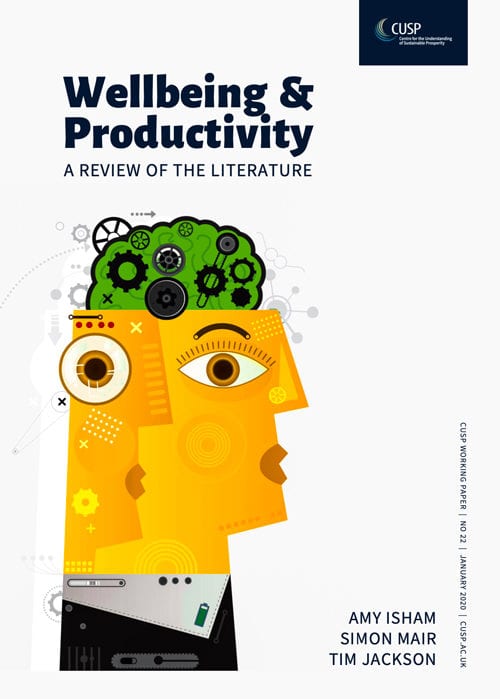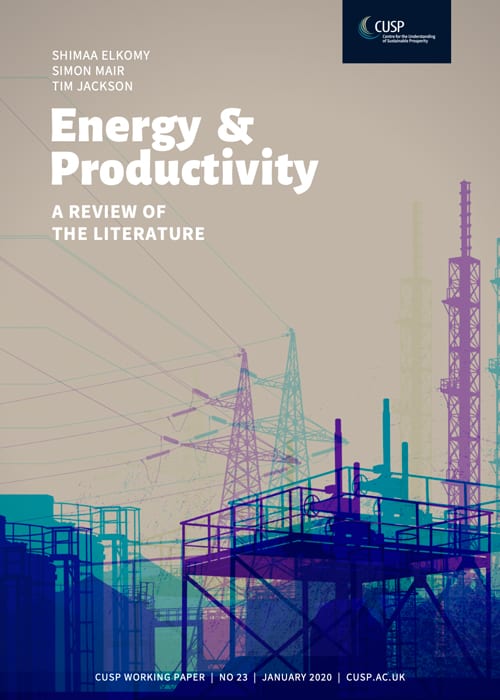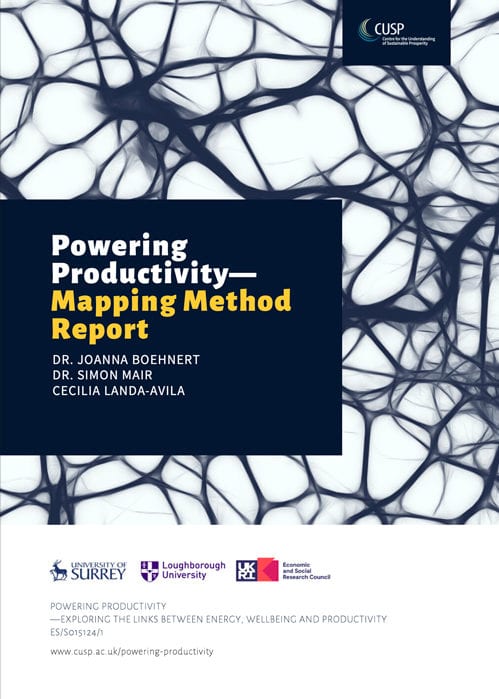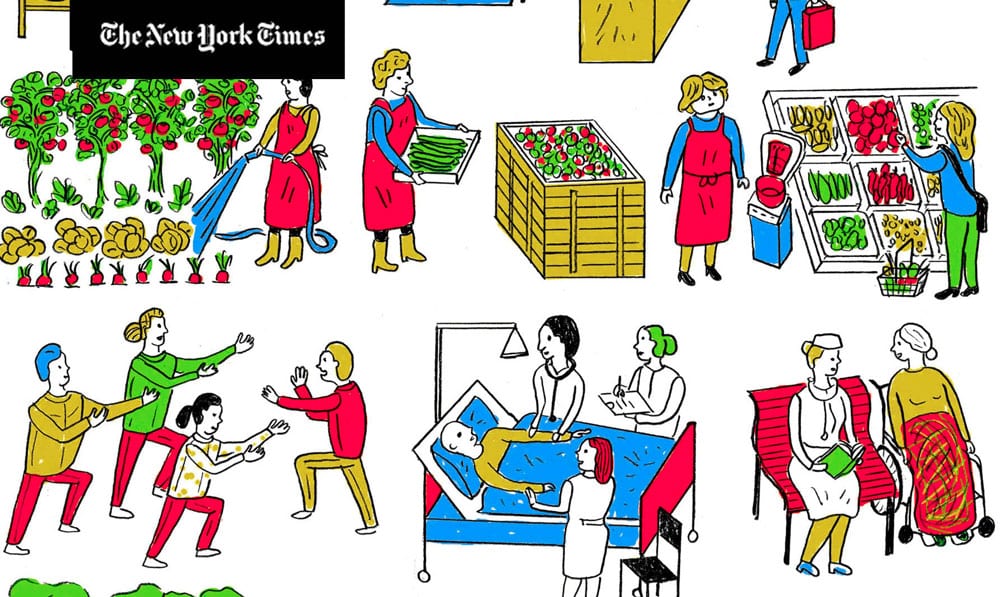THEMES / SYSTEM DYNAMICS / POWERING PRODUCTIVITY
Powering Productivity | Exploring links between energy, wellbeing and the UK’s productivity puzzle
Productivity growth means getting more output from fewer inputs. It is a key goal of conventional economic policy. But ‘productivity growth’ is a vague concept and there are large gaps in our understanding of it. This ESRC funded project explores links between the different types of productivity and two major gaps: the relationship between energy and producanoctivity, and wellbeing and productivity. The aim is to map the existing evidence base and guide future ESRC productivity research.

Challenge
Among policymakers and economists it is widely agreed that the UK has a ‘productivity problem’. In the UK, Labour productivity growth has been falling since the mid-1960s. This trend intensified after the financial crisis, when UK labour productivity growth collapsed altogether. Although the UK situation is particularly acute, it is not unusual. Falling labour productivity growth is seen in economies across the world. This could be because of changes in the nature of energy supply and demand over the last few decades.
Energy is closely related to the key elements conventionally thought to impact productivity (such as technology), but could also be linked in less obvious ways. For example, changes in the structure of the economy (as we shift from manufacturing to services), gender and income inequalities, and the physical quality of energy itself may all play a role in mediating the energy-productivity relation. Properly understanding all these factors is essential, partly because we expect big changes in the energy base of the economy as we move to low-carbon energy sources.
Falling productivity growth is considered a problem because in conventional economics productivity growth (particularly labour productivity growth) is thought to be linked to material standards of living. In this view as productivity growth falls, so does growth in material living standards. In the dominant political economy, reductions in the growth of material living standards are assumed to lead to reduced wellbeing.
However, it is unclear just how strong the link between productivity growth and wellbeing actually is. Productivity growth does impact some parts material living standards, such as the distribution of income. However, its impact on these elements is mediated by other factors such as government policy. At the same time, it is also possible that an over focus on productivity growth could negatively impact societal wellbeing. For example, many activities that are key providers of societal wellbeing have low levels of productivity growth. Low labour productivity growth activities include health and social care, and education—all key sectors in terms of the economy’s ability to generate wellbeing. The relation between productivity growth and wellbeing is complex and underexplored.
Mapping the evidence base on productivity, energy and wellbeing
This project used a combination of conventional literature reviewing and participatory systems mapping techniques to map the evidence base on the links between energy and productivity, and productivity and wellbeing.
Workshops brought together experts from policy and academic communities. At these workshops, participants used systems oriented design techniques to visualise key relationships and tensions in our understanding of productivity. The outputs from the workshop were used to guide literature reviews and innovative visualisations.
Isham A, S Mair and T Jackson 2020. Wellbeing and Productivity—a review of the literature.
Executive Summary (0.5MB).
Full Report (2.9MB).
Elkomy S, S Mair and T Jackson 2020. Energy and Productivity—a review of the literature.
Executive Summary (0.6MB).
Full Report (5.3MB).
Boehnert J, S Mair and C Landa-Avila 2019. Mapping Method Report.
Briefing note (2MB).
Full Method Report (10.6MB).
Bibliographic Database
We have curated two freely accessible and updatable online databases of literature relevant to the relationship between energy and productivity, and wellbeing and productivity. The entries in the database are based on the references of two forthcoming reports. If you have relevant literature that you think should be included, please email Simon Mair (energy) or Amy Isham (wellbeing).
The databases are developed on Zotero. To get the most use from it, it’s probably best to sign up for a free Zotero account, however the entries are visible to anyone.
Energy Bibliographic Database →
Wellbeing Bibliographic Database →
Interactive Maps
We have developed beta versions of two interactive infographics to allow for visual exploration of the links between energy, productivity and wellbeing. Please follow the links below for access to these. For full functionality, you will need to use the Chrome browser.
Additional Background Material
Ahead of each of our workshops, participants received a briefing note. The two short summaries represent our initial scoping of the literatures on energy and productivity, and wellbeing and productivity. They were designed to provoke discussion and debate on these issues.
Energy/Productivity Note (900KB)
Wellbeing/Productivity Note (950KB)











